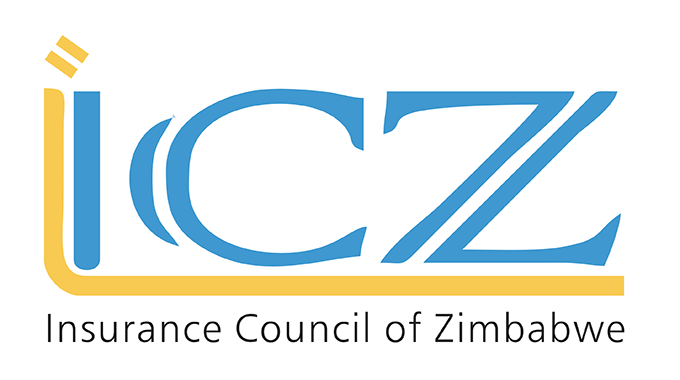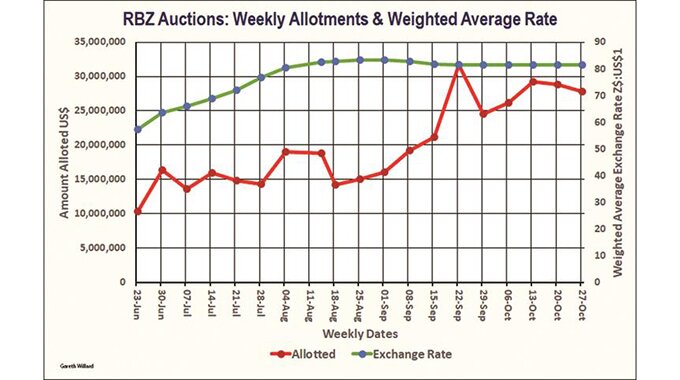Golden Sibanda
Senior Business Reporter
The Reserve Bank of Zimbabwe (RBZ) is devising strategies to entrench de-dollarisation in the informal sector where most transactions are being done in US dollars.
The central bank’s Monetary Policy Committee (MPC) was due to meet on Friday to craft effective strategies to bring on board informal players into the process of de-dollarisation, which the bank says has recorded encouraging success in the formal sector.
However, the majority of transactions in the informal sector, which is estimated to constitute over 60 percent of the domestic economy, are done using US dollars while in instances where local currency is used, prices are indexed to the US dollar parallel market exchange rates.
This comes after Zimbabwe re-introduced its own currency in February last year and went further to scrap the greenback-dominated multi-currency system to replace it with Zimbabwe dollar-based mono-currency system in June 2019, amid a growing shortage of US dollars.
Advertisement
Eddie Cross, a member of the MPC, told The Sunday Mail Business that the committee was meeting on Friday last week to devise a programme for de-dollarisation in the informal sector, as Zimbabwe moves to break ranks with the US dollar.
“What we have decided to do now at our meeting on Friday is to agree to a definite programme to deal with remaining elements in our economy which are using US dollars. We decided on a five-year transition because we think it will take a long time,” Mr Cross said.
The ex-legislator said amid the prevailing cash crunch, there were more US dollars in circulation in the economy than there were Zimbabwe dollars, bond notes and coins.
Mr Cross said the public preferred to hold and transact in the US dollar because prices in this currency were lower and comparable to regional trends while its stability also meant it was a good store of value, which cannot be said about the Zimbabwe dollar.
Indications are that the authorities are going to use moral suasion as opposed to force or prosecution to get locals to use the Zimbabwe dollar in transacting, following reintroduction of the unit in February last year, after a 10-year hiatus.
This comes after RBZ Governor Dr John Mangudya last week said the monetary authorities were encouraged by the progress made towards scrapping use of the US dollar as a medium of exchange in Zimbabwe, since scrapping the greenback last year.
Dr Mangudya said evidence of the de-dollarisation progress was that a total of 189 million transactions valued at $459 billion were completed in local currency, just about 10 months after the country adopted the decision to do away with US dollars.
He also said the proportion of foreign currency deposits to total money supply in the economy went down to 37 percent last year while foreign currency denominated loans stood at 22 percent of total bank loans and advances in period to December 2019.
Dr Mangudya stressed that de-dollarisation was a process not an event and that Zimbabwe was targeting to complete the programme over five years, basing the timelines on experiences of other countries that have gone through similar experiences.
He said to grow confidence in the local currency, the bank would this year focus on stabilising the exchange rate and inflation, which have seen the majority of people prefer to hold the US dollar as a store of value and to finance imports.
Advertisement
As part of measures to ensure stability of the local currency, the central bank governor will be tightening control on broad money supply growth to anchor exchange rate stability and low inflation, major reasons driving public fear to hold the greenback.
Amid doubts and cynicism over claims of progress on de-dollarisation, Dr Mangudya took a little time to peek into what may be happening.
He said there was a difference between re-dollarisation and de-dollarisation and that because the economy was coming from a dollarised environment, the question is not whether the economy is re-dollarising, but what portion of the economy is still dollarised.
“Therefore, it means when you are moving from dollarisation to de-dollarisation, you still have elements dollarisation. The question is; what is the level of dollarisation in the de-dollarised environment? That is the question. It is not an overnight event; it is a gradual process,” Dr Mangudya said.
The central bank chief said success stories of de-dollarisation in the world included Israel in the Middle East, Bolivia and partially, Argentina in South America. Zimbabwe officially dollarised in February 2009 after its currency had been ravaged by hyperinflation.
In his arguments that de-dollarisation was on course, Dr Mangudya, however seemed to overlook the fact that the majority of transactions in the formal market are not recorded, which weakens claims that most transactions in the economy were in local currency last year.
Further, some of the transactions that make up the $459 billion transacted in Zimbabwe dollars last year include transactions that entailed trading of currencies, including US dollars, through transfers done in broad daylight on the parallel market.
Economist Dr Gift Mugano said while authorities claim success on de-dollarisation, the situation on the ground told a different story and that authorities also seemed to “indicate left and turn right” by continuing to authorise sections of the economy to charge in US dollars while pushing to de-dollarise.
The bank, in its quest to improve the critical fuel supply in the country, announced it would allow fuel companies with free funds to import and sell fuel at designated service stations currency across the country.








